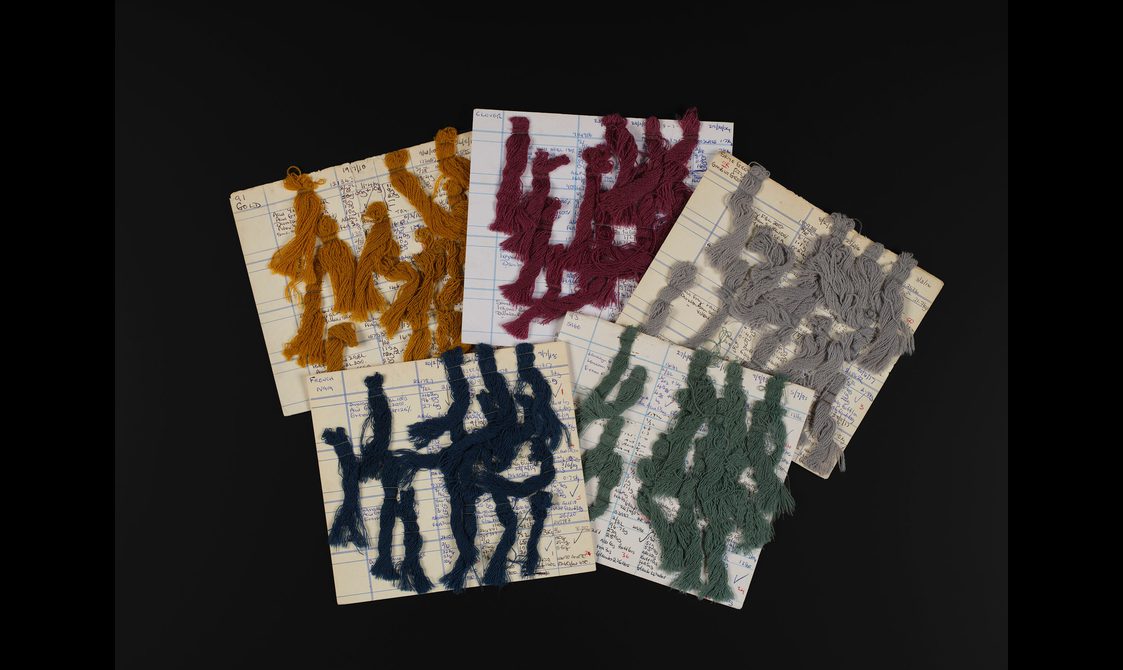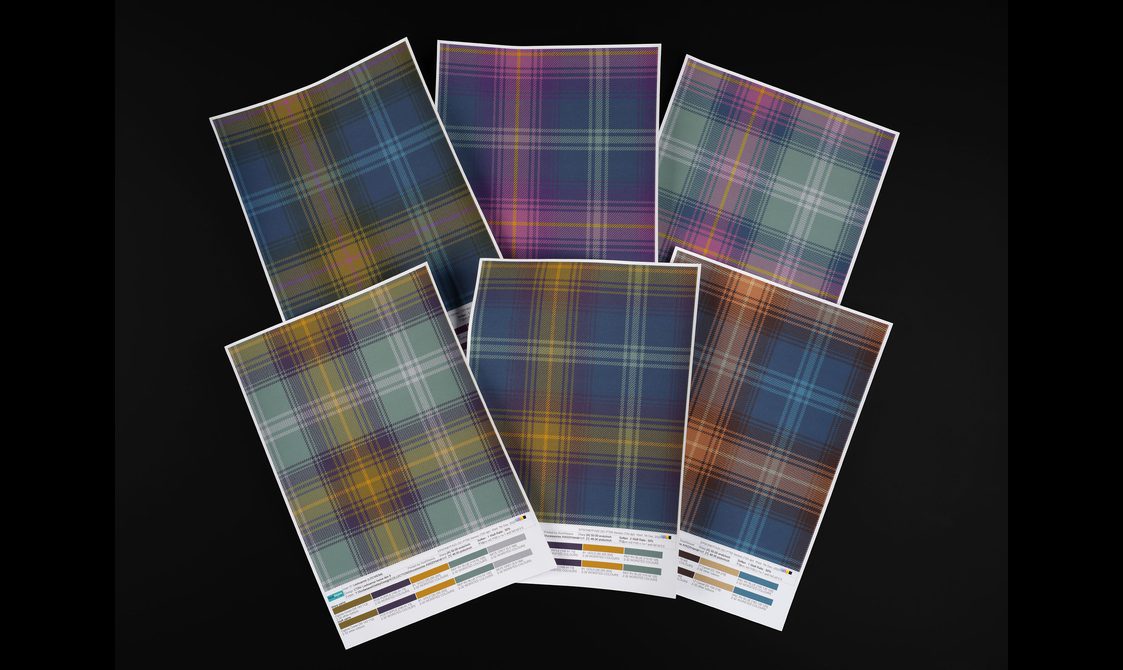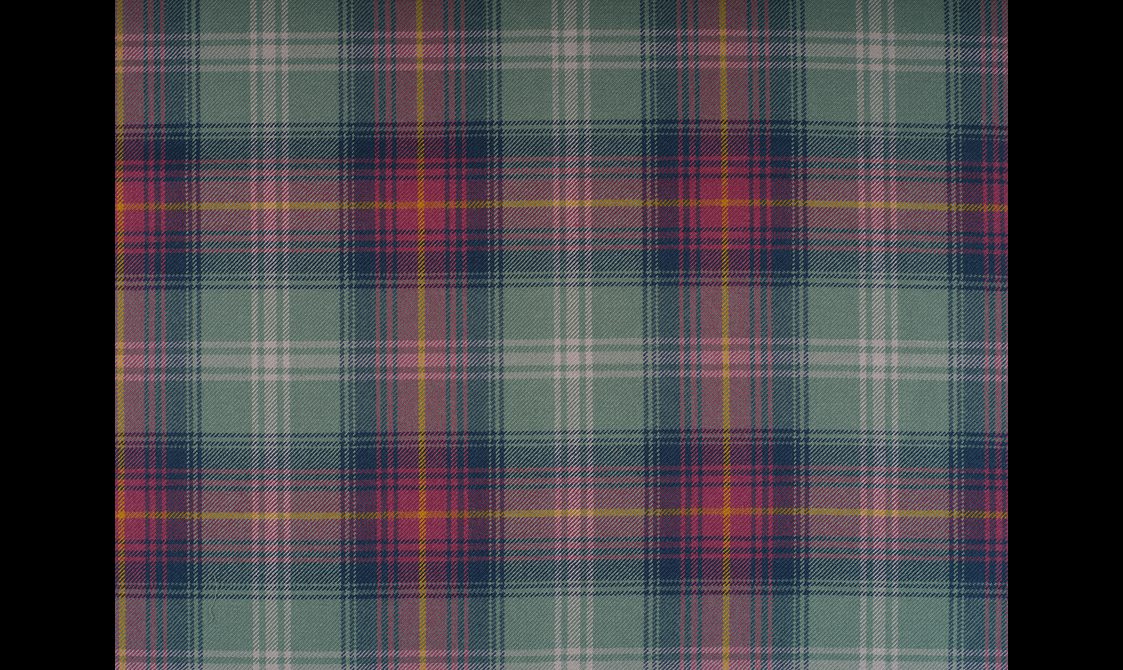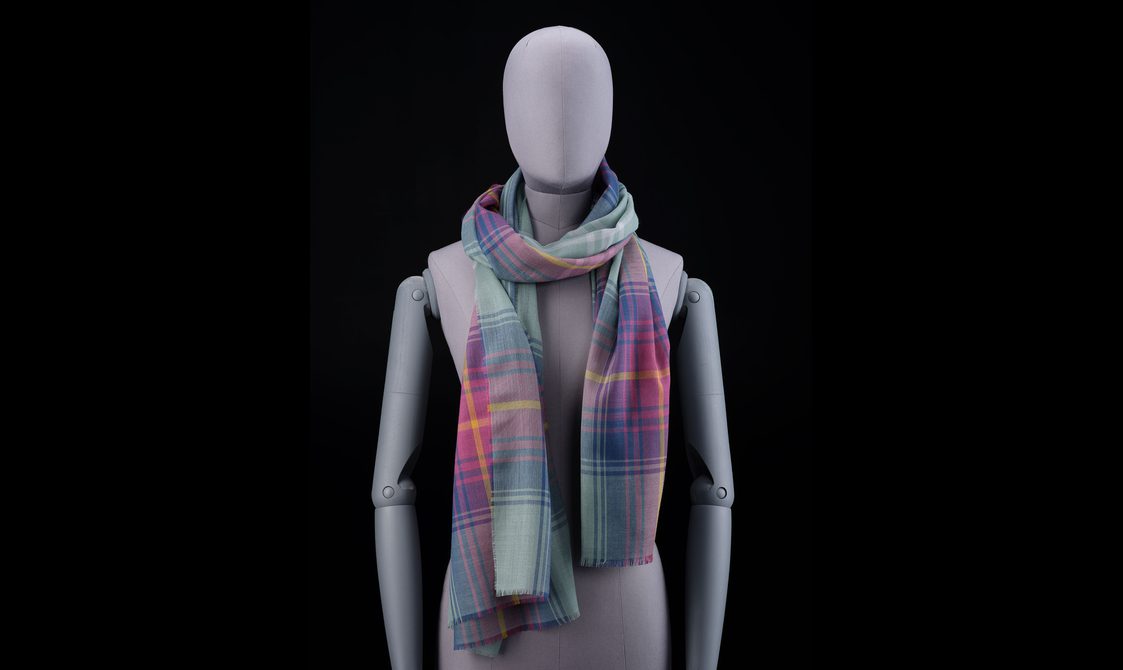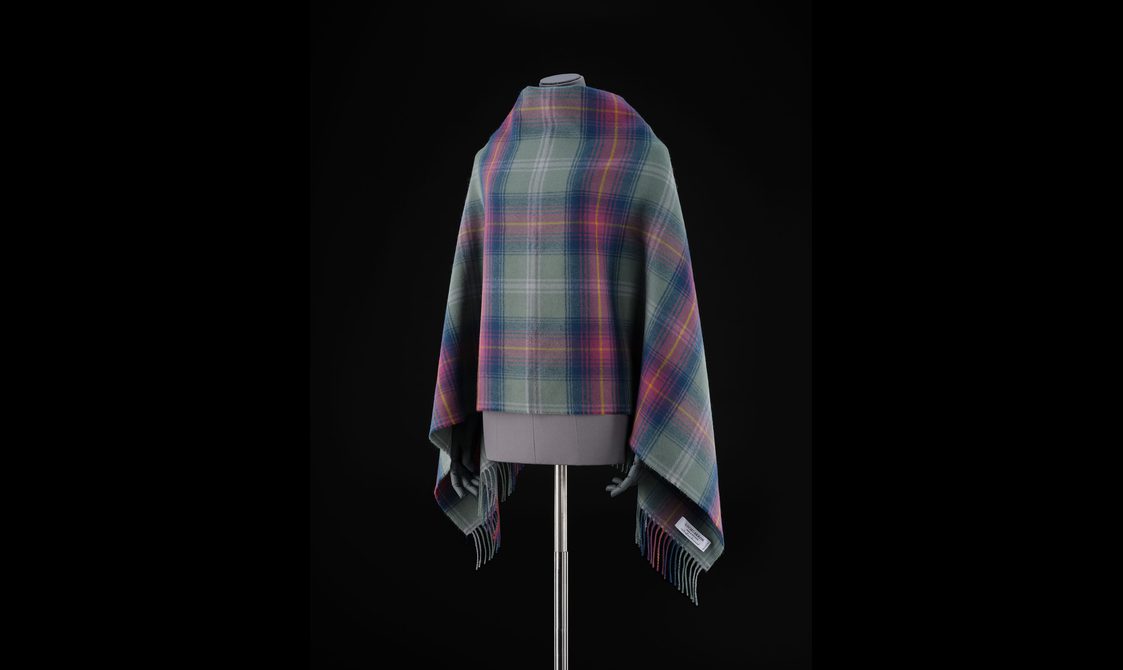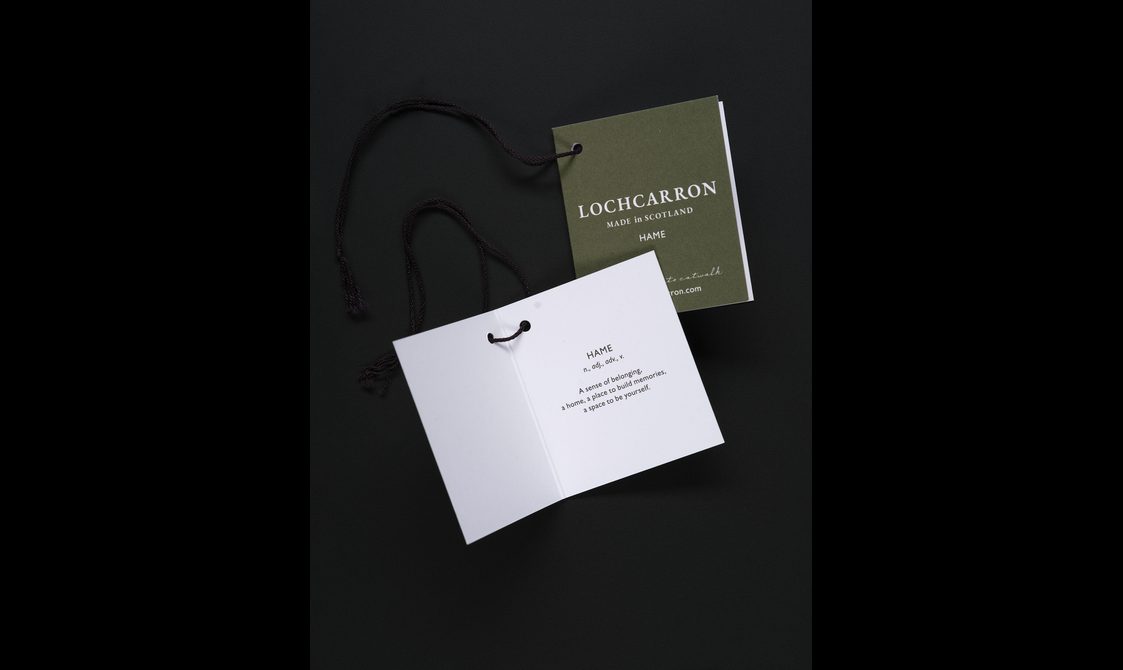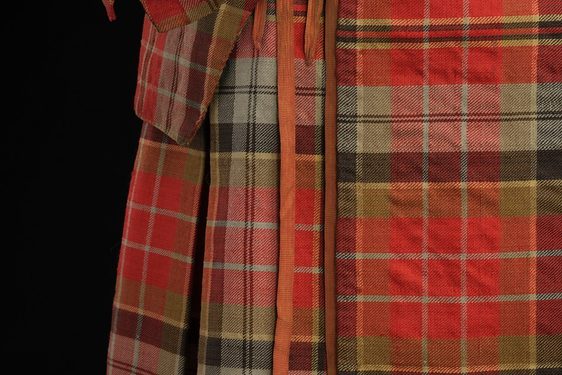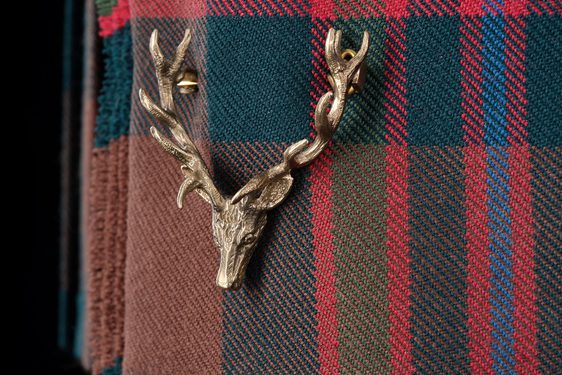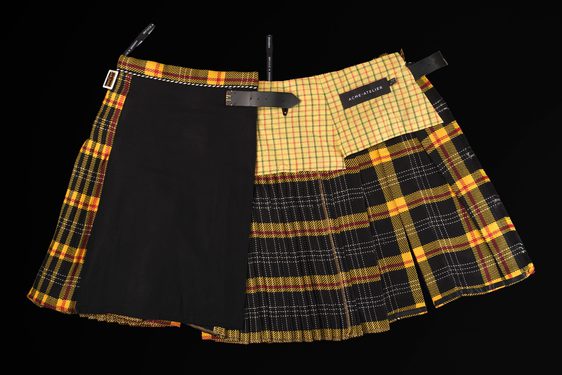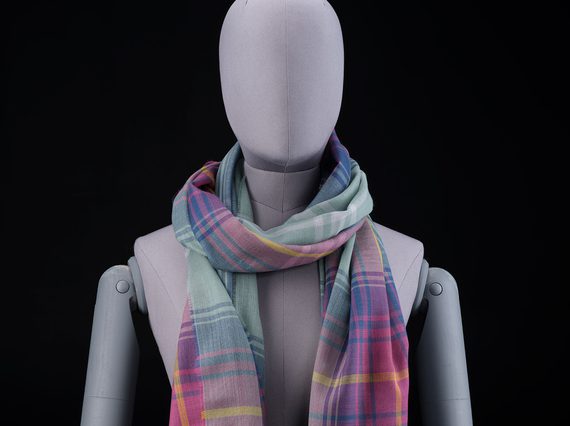
From computer screen to finished fabric: ‘Hame’ tartan
News Story
National Museums Scotland holds an extensive collection of 19th and 20th century tartan swatches and design ephemera. In the past, it was usual for tartan manufacturers to design patterns using gridded paper, coloured pencils, inks, paints, and yarns. Today, most weavers use Computer Assisted Design (CAD) software to create new patterns for the market.
To reflect this shift towards digital methods, we have worked with weavers Lochcarron of Scotland to collect the various stages of designing and manufacturing a contemporary fashion tartan, from computer screen to finished fabric.
The ‘Hame’ tartan was created in 2020 in response to the Covid-19 pandemic to elicit feelings of homecoming and comfort. The colours used within the pattern were inspired by the purple heather, yellow gorse, green hills, and the blue of local waterways that surround Lochcarron’s mill in Selkirk in the Scottish Borders.
Lochcarron of Scotland is one of the largest commercial tartan mills in the world. With its roots in the late 19th century, it produces an extensive range of clan and bespoke tartans for use in Highland wear, domestic interiors, and contemporary fashion.
Image gallery
